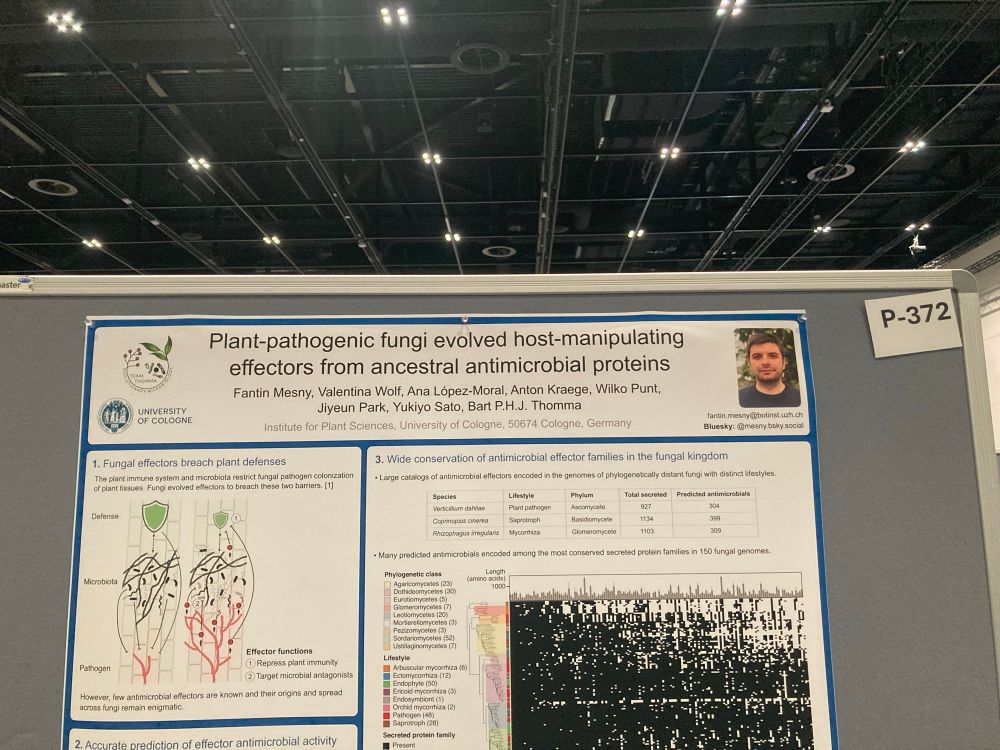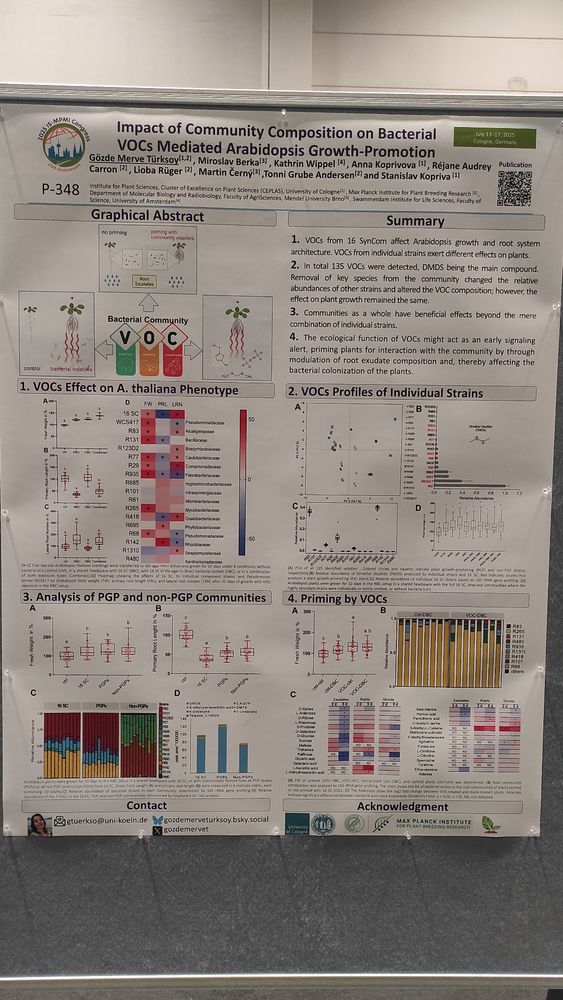
Molecular Biology of Plants (#MBP2026) Conference in Hennef
Registration + abstract submission end on
🗓️ 23rd November 2025
www.pflanzen-molekularbiologie.de/en/conferenc...

Molecular Biology of Plants (#MBP2026) Conference in Hennef
Registration + abstract submission end on
🗓️ 23rd November 2025
www.pflanzen-molekularbiologie.de/en/conferenc...
journals.plos.org/plosbiology/...

journals.plos.org/plosbiology/...
www.mgcmeeting.com

www.mgcmeeting.com
The award ceremony and the recipient's lecture will take place at the next Tokyo Annual Meeting on 14 March 2026.
buff.ly/pemelQu

The award ceremony and the recipient's lecture will take place at the next Tokyo Annual Meeting on 14 March 2026.
buff.ly/pemelQu
Latest from the lab. The conclusion is in the title!
Basically, we found that the KMN complex (outer kinetochore) is fully conserved between plants and fungi/animals, showing deep origin. (reminder, you are closer to a mushroom than a mushroom is to a plant.)

Latest from the lab. The conclusion is in the title!
Basically, we found that the KMN complex (outer kinetochore) is fully conserved between plants and fungi/animals, showing deep origin. (reminder, you are closer to a mushroom than a mushroom is to a plant.)
doi.org/10.1101/2025...
Here, we identified and functionally validated a novel master regulator of intracellular symbioses!
A thread ...
#PlantScience

doi.org/10.1101/2025...
Here, we identified and functionally validated a novel master regulator of intracellular symbioses!
A thread ...
#PlantScience

🧬 Large-scale Phylogenomics Reveals Systematic Loss of Anthocyanin Biosynthesis Genes at the Family Level in Cucurbitaceae
👉 doi.org/10.1101/2025...
@nancy-choudhary.bsky.social @bpucker.bsky.social

🧬 Large-scale Phylogenomics Reveals Systematic Loss of Anthocyanin Biosynthesis Genes at the Family Level in Cucurbitaceae
👉 doi.org/10.1101/2025...
@nancy-choudhary.bsky.social @bpucker.bsky.social
Latest biosensor from @xanderjones.bsky.social team
In Science doi.org/10.1126/scie...
Summary www.slcu.cam.ac.uk/news/new-bio...
Latest biosensor from @xanderjones.bsky.social team
In Science doi.org/10.1126/scie...
Summary www.slcu.cam.ac.uk/news/new-bio...
🧬 Large-scale Phylogenomics Reveals Systematic Loss of Anthocyanin Biosynthesis Genes at the Family Level in Cucurbitaceae
👉 doi.org/10.1101/2025...
A deep dive into the genomic evolution of color in cucurbits 🎃🍉 — feedback welcome!
@puckerlab.bsky.social

🧬 Large-scale Phylogenomics Reveals Systematic Loss of Anthocyanin Biosynthesis Genes at the Family Level in Cucurbitaceae
👉 doi.org/10.1101/2025...
A deep dive into the genomic evolution of color in cucurbits 🎃🍉 — feedback welcome!
@puckerlab.bsky.social
genomebiology.biomedcentral.com/articles/10....

genomebiology.biomedcentral.com/articles/10....
Started to make a complete catalogue and had to focus. Even with all this knowledge, we still haven't studied most Arabidopsis enzymes or metabolites doi.org/10.1093/plph...

Started to make a complete catalogue and had to focus. Even with all this knowledge, we still haven't studied most Arabidopsis enzymes or metabolites doi.org/10.1093/plph...
@newphyt.bsky.social
doi.org/10.1111/nph....
@parkergroup.bsky.social

@newphyt.bsky.social
doi.org/10.1111/nph....
@parkergroup.bsky.social
➡️ Details: www.izmb.uni-bonn.de/en/pbb/teach...
#StudentResearch #PlantScience #Bonn

➡️ Details: www.izmb.uni-bonn.de/en/pbb/teach...
#StudentResearch #PlantScience #Bonn
More research by @teamthomma.bsky.social at P-091, P-170, P-299, P-317, P-337 and P-388.

More research by @teamthomma.bsky.social at P-091, P-170, P-299, P-317, P-337 and P-388.
Curious about how bacterial community volatiles influence Arabidopsis thaliana growth? Come check out my poster and let’s discuss the fascinating effects of bacterial VOCs on plant! #2025MPMI
Looking forward to exchanging ideas!

Curious about how bacterial community volatiles influence Arabidopsis thaliana growth? Come check out my poster and let’s discuss the fascinating effects of bacterial VOCs on plant! #2025MPMI
Looking forward to exchanging ideas!

#2025ISMPMI
Also check out more from @parkergroup.bsky.social:
🔹 @laravdijck.bsky.social – P240 on Thursday
🔹 Steven Cheng – P011 on Wednesday
#2025ISMPMI

#2025ISMPMI

Also check out more from @parkergroup.bsky.social:
🔹 @laravdijck.bsky.social – P240 on Thursday
🔹 Steven Cheng – P011 on Wednesday
#2025ISMPMI

Also check out more from @parkergroup.bsky.social:
🔹 @laravdijck.bsky.social – P240 on Thursday
🔹 Steven Cheng – P011 on Wednesday
#2025ISMPMI

